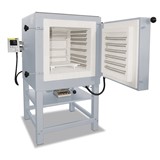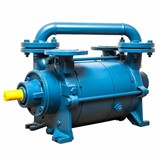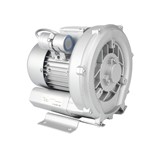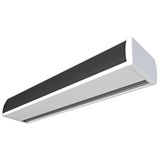Modern Casting
As inductor designs changed and furnace sizes increased, there was the need to simplify the installation of the inductor refractory by allowing for form vibration of the inductor casings with an air-driven vibrator, which attached directly to the inductor case. Some labor and time savings were realised, but optimal installation was always reliant on a consistent, clean air source to adequately power the pneumatic vibrator.
This compressed air must be moisture-free to ensure maximum vibration as any moisture presence would dampen the vibration output. However, dry, compressed air is not always available.
Allied Mineral Products Inc., Columbus, Ohio, developed a new installation method to provide lower labor costs, consistent vibration, less installation variability and additional time savings without being affected by any compressed air systems in the metalcasting facility. Rather than air, the electric vibration system (EVS) requires electrical power and is a more robust method of installing dry vibratable refractories in channel induction furnaces.
The primary benefit of EVS is the ability to install refractory into the sidewalls of coreless induction furnaces and channel furnace inductors without manually deairing/forking the refractory material. The EVS performs the deairing as part of the vibration process, thereby reducing labor costs and installation time. In addition, the refractory can be installed using bulk packaging lifted by cranes and can be added to fill a large inductor case completely in 10 min.
EVS is a versatile and consistent system. The variable frequency drive is accurate to 0.01 Hz, so the output of the vibrator will be exactly what is programmed into the unit. EVS also has been proven successful in large single and douple loop inductors containing up to 7,700 lbs. (3,500 kg) of high alumina- or magnesia-based refractory and in small single loop inductors containing 1,100 lbs. (500 kg).
Installation using the EVS is done in four steps:
* inductor casing and bushing assembly;
* addition of refractory into the inductor;
* mounting of EVS vibrator to the inductor casing;
* vibration sequence.
The initial cost of the EVS is higher than vibrating tampers and pneumatic vibrators, but the reduced manpower and installation time combine for a faster turnaround and increased productivity.
Many EVS installations are currently online or have recently finished their campaigns. At one metalcasting facility, a magnesia-based refractory was installed into a 500-kW, single loop inductor for a 15 metric ton pouring furnace for gray iron. The inductor campaign spanned 18 months. A total of 4,200 lbs. (1,900 kg) was installed using two vibrator locations. The amount of refractory installed equaled the amount installed using a pneumatic vibrator with manual de-airing of 3-in. (75-mm) refractory layers. Total installation time was less than one hour.









